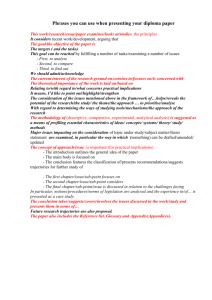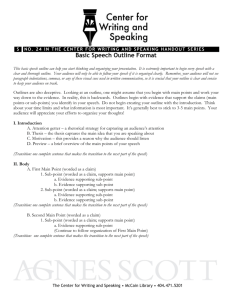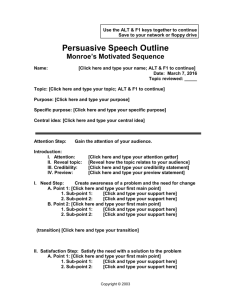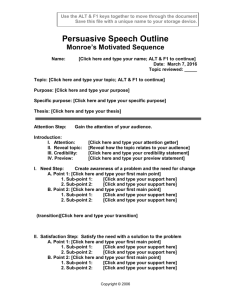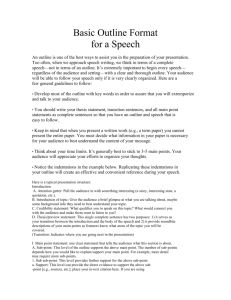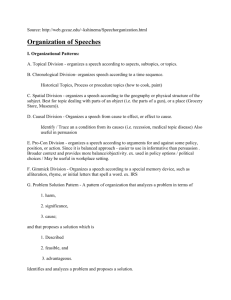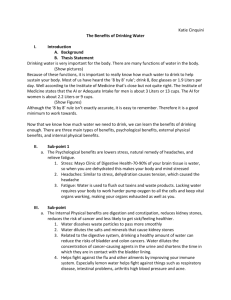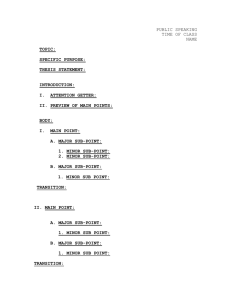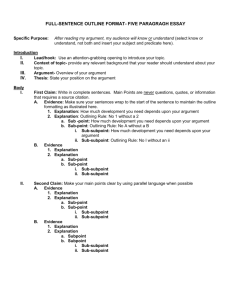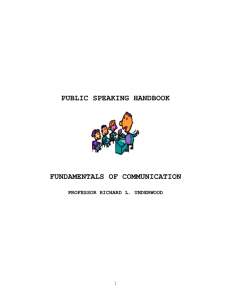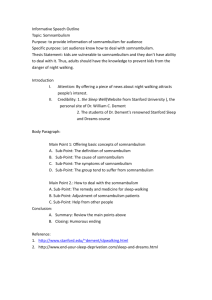Basic Outline for a Speech
advertisement
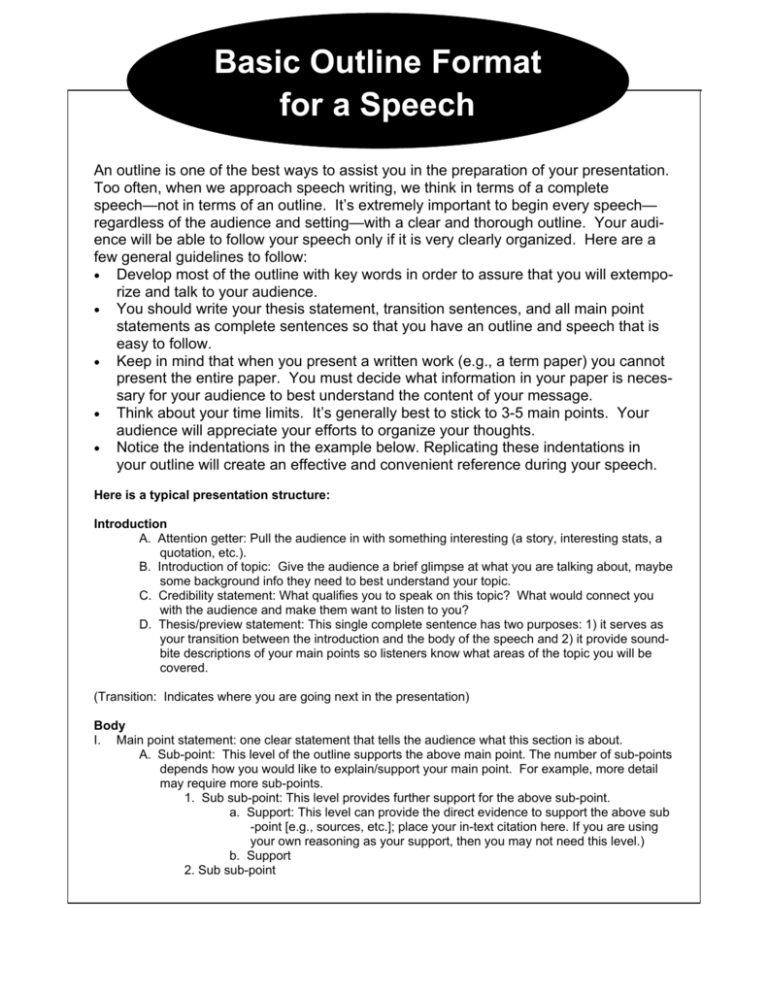
Basic Outline Format for a Speech An outline is one of the best ways to assist you in the preparation of your presentation. Too often, when we approach speech writing, we think in terms of a complete speech—not in terms of an outline. It’s extremely important to begin every speech— regardless of the audience and setting—with a clear and thorough outline. Your audience will be able to follow your speech only if it is very clearly organized. Here are a few general guidelines to follow: • Develop most of the outline with key words in order to assure that you will extemporize and talk to your audience. • You should write your thesis statement, transition sentences, and all main point statements as complete sentences so that you have an outline and speech that is easy to follow. • Keep in mind that when you present a written work (e.g., a term paper) you cannot present the entire paper. You must decide what information in your paper is necessary for your audience to best understand the content of your message. • Think about your time limits. It’s generally best to stick to 3-5 main points. Your audience will appreciate your efforts to organize your thoughts. • Notice the indentations in the example below. Replicating these indentations in your outline will create an effective and convenient reference during your speech. Here is a typical presentation structure: Introduction A. Attention getter: Pull the audience in with something interesting (a story, interesting stats, a quotation, etc.). B. Introduction of topic: Give the audience a brief glimpse at what you are talking about, maybe some background info they need to best understand your topic. C. Credibility statement: What qualifies you to speak on this topic? What would connect you with the audience and make them want to listen to you? D. Thesis/preview statement: This single complete sentence has two purposes: 1) it serves as your transition between the introduction and the body of the speech and 2) it provide soundbite descriptions of your main points so listeners know what areas of the topic you will be covered. (Transition: Indicates where you are going next in the presentation) Body I. Main point statement: one clear statement that tells the audience what this section is about. A. Sub-point: This level of the outline supports the above main point. The number of sub-points depends how you would like to explain/support your main point. For example, more detail may require more sub-points. 1. Sub sub-point: This level provides further support for the above sub-point. a. Support: This level can provide the direct evidence to support the above sub -point [e.g., sources, etc.]; place your in-text citation here. If you are using your own reasoning as your support, then you may not need this level.) b. Support 2. Sub sub-point a. Support b. Support B. Sub-point (Transition: ) II. Main point statement A. Sub-point 1. Sub sub-point a. Support b. Support 2. Sub sub-point a. Support b. Support c. Support B. Sub-point 1. Sub sub-point 2. Sub sub-point C. Sub-point (Transition: see note above) III. Main point statement A. Sub-point 1. Sub sub-point a. Support b. Support 2. Sub sub-point B. Sub-point C. Sub-point (Transition: Beginning this statement with a version of “In conclusion . . . ” is just fine!) Conclusion A. Summary: Use this moment to express what you want the audience to remember after the speech is over. Make this meaningful. It should be something more than, “Today we talked about X, Y, Z.”) B. Clincher: You need to have a strong ending. It often works well to refer back to your attention getter, to end with a strong quotation, to create a strong image, etc. References (new page) Use APA or MLA style (or a particular style that your professor requests; see Writing Center handouts for more information about references/works cited pages). Both APA and MLA require alphabetized sources. The University of Southern Mississippi Speaking Center www.usm.edu/speakingcenter
